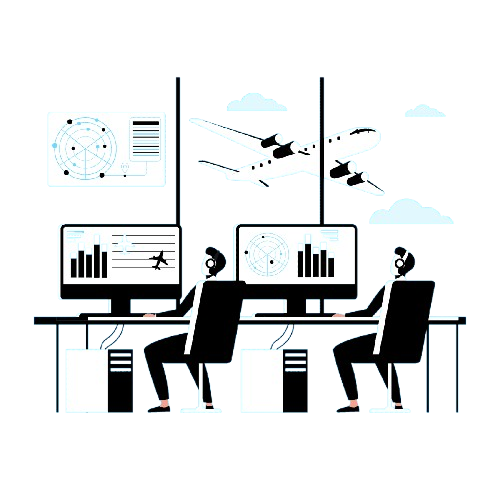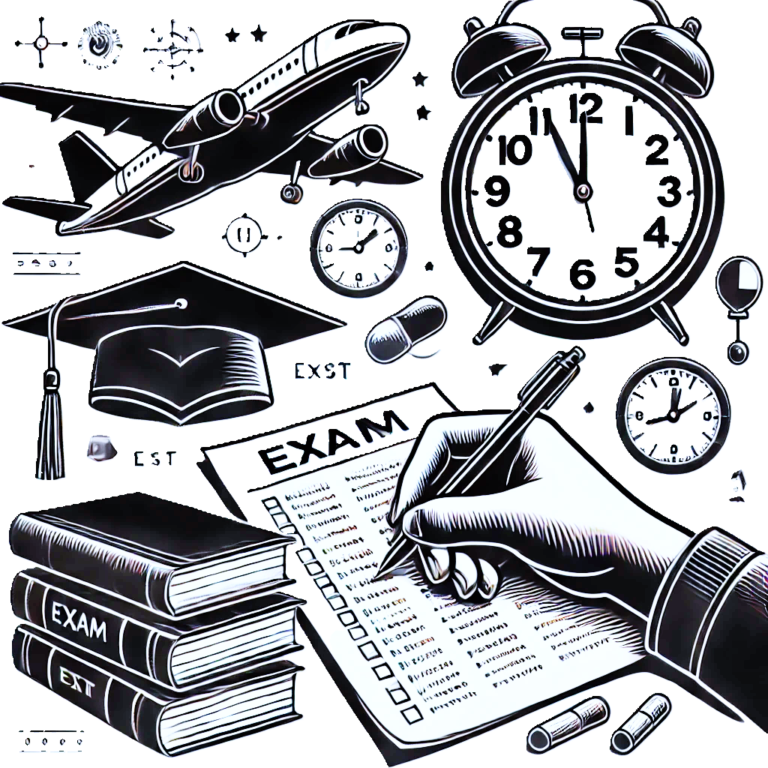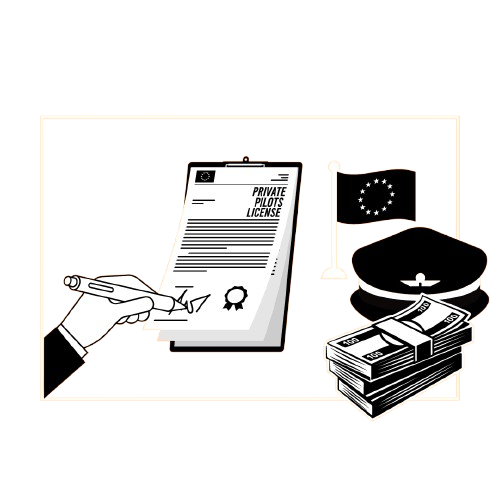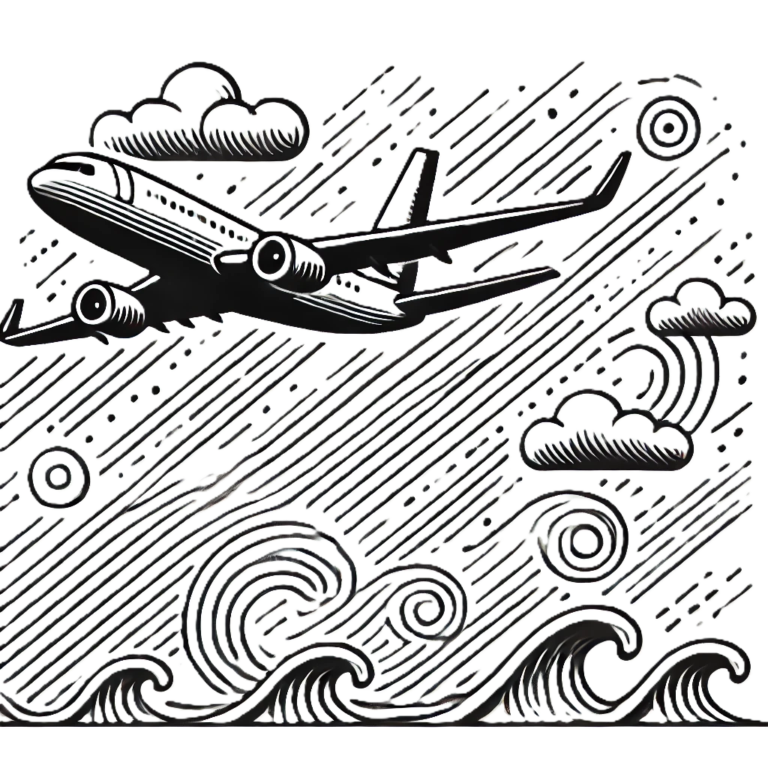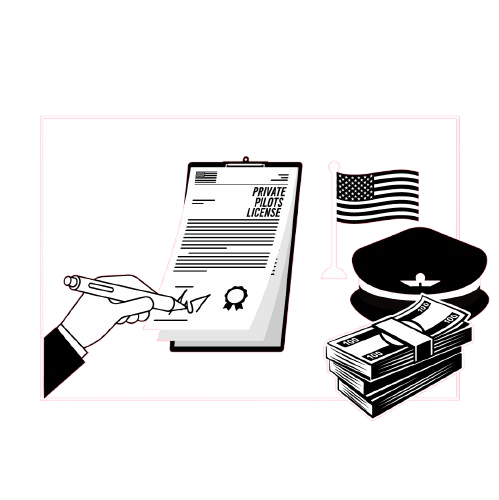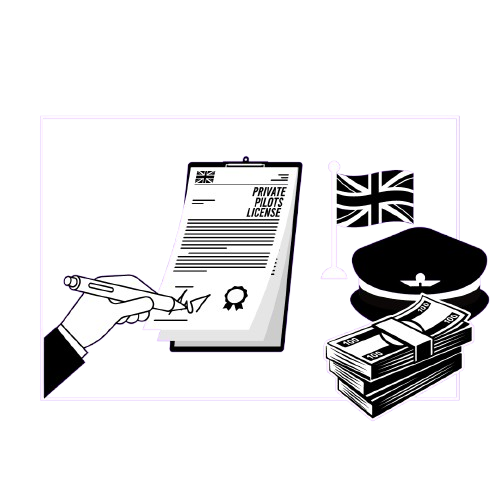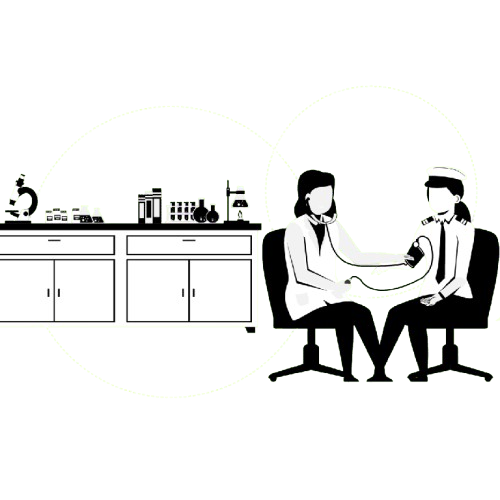Modular Pilot Training – A 737 Pilots Story Of Becoming A Pilot
An Incredibly Imperfect Story Of Becoming An Airline Pilot.
Pilot training is often put forward as two simple routes (in Europe at least), and on the surface, they do both indeed look ‘simple’, but as with anything in life, nothing is ever as black and white as it may seem.
That fact is only amplified in aviation – from flight training to just going about your day-to-day life as an airline pilot.
If anything does go precisely to the script, then it’s often more of a surprise than when it doesn’t. This sums up my training story as a whole, as you’ll understand that very little turns out precisely as you’d hoped.
You’ll realise how important it is to manage your expectations from the outset.
I Have Always Wanted To Be A Pilot
Learning to fly and become a pilot was something I always wanted to do and I never saw myself doing anything else.
As corny and cliche as it sounds; my eyes had been looking above the horizon since I could talk – which probably had something to do with the fact that Concorde used to make its way over my house and school 7 days a week, at barely 2000 feet!
I was rarely captured by anything else, and school work was no exception to this – which I was not good at, and I actually left school with very, very little compared to almost everyone I’ve met in aviation.
If most of my teachers saw me now, I think they’d be slightly confused about how I ended up where I am today.
By researching the pilot job industry at a young age, I knew I only needed two things to go for me (okay, maybe three): health, financial ability and commitment to the training regimes at hand.
My Journey To Becoming A Commercial Airline Pilot
I was privileged to be in a position in life where most of the stars aligned, and I could at least entertain the idea of training at a young age – maybe not in the same way as others, but the door wasn’t completely closed.
The year is 2011, and I’m 16 with very little idea of what to do, apart from the simple fact of wanting to be flying.
I’ve left school with little to nothing, and if you asked most other people, they’d tell you that was a bad idea (even probably I would), but I never saw that as a hurdle – I was so laser-focused on what it was that I wanted.
The Modular Pilot Training Route – Learning To Fly
I only had one training route available to me, the modular one, which never required any educational prerequisites. Therefore, I understood I could get going without much in the way besides obvious finances.
The summer after leaving school, I moved abroad with my parents to Southern California, United States, where my dad worked and was lucky enough to live there until I was 23.
After settling in time, I went down to the nearest airport with a flight school, which ended up being John Wayne in Orange County and signed up for a discovery flight in a little two-seater Evektor SportStar aircraft.
I’m not going to lie; it was incredible but also immensely intimidating.
I can’t help but remember the feeling of wondering how I could remember all of the things required to be a pilot – that’s because there was a significant element of culture shock.
Aviation and flying are genuinely their own little world, with a completely new language and many unique cultures within. It’s A LOT to digest at first, but not a deterrent, just something you have to grow into.
I began my journey to acquire a private pilot certificate within my first year out of John Wayne and finished when I was 18.
Alongside this, I was running an aviation-based YouTube channel that I started during Year 9 in school after getting my first little point-and-shoot camera for Christmas one year.
This became a hobby of mine and eventually grew into something much larger, opening up revenue streams through a Google Adsense partnership that allowed me to generate an income alongside my training.
Remember when I said I wasn’t very good in school? I spent most of my time innocently working on this during those years – albeit not entirely knowing it would become a beneficiary!
The private pilot licence (PPL) section of training, looking back, was probably one of the most enjoyable parts.
It’s where you truly nail in a lot of your foundations and when you have a great instructor flying in a beautiful part of the world, there’s little room for complaining.
The whole idea of being in the air remains fresh throughout, and the novelty is very much present. It had its moments, though, which were incredibly useful lessons moving forward.
Flying an aircraft on your own for the first time is a unique experience very few have in life – it’s one to savour and capture in every way possible.
After Earning My Private Pilot Licence
After completing my PPL, it was an interesting moment because I actually didn’t go any further with any training until well over a year later.
In this time, I was focusing on other projects to do with my YouTube and some Freelance Software Testing I had gotten into.
It’s not because I didn’t want to train any further, I’d have loved to have done it all at once, but the finances simply wouldn’t allow for that and patience was required.
I flew here and there when I could, but it was nothing like the level before and made each minute in the air a lot sweeter.
When it was finally time to get stuck into some more training, the route of going all the way to an American (FAA) Commercial License and then converting was still very much a thing – but a lot less so than it had been in the past.
It was that or look back towards Europe and going down the ‘traditional’ hour building with Air Transport Pilot Licences.
I was a little bit stuck because as much as I wanted to eventually start my career in the UK, I loved the idea of holding dual licenses in the scenario I stayed in the US.
Eventually, I continued with my FAA training and began the American instrument flight rules training (IFR), alongside some hour building.
I made slower progress than I would have liked. In this staggered time, I discovered that after EASA fully took over the older JAA regime, it had become a little more long-winded to go down the conversion route and would have ended up costing me more money and time than just the one license route.
After careful consideration and time talking to friends in the industry, I made the decision to pack in the FAA IR almost halfway through and come up with a new plan of action.
After Earning My Private Pilot Licence
After completing my PPL, it was an interesting moment because I actually didn’t go any further with any training until well over a year later.
In this time, I was focusing on other projects to do with my YouTube and some Freelance Software Testing I had gotten into.
It’s not because I didn’t want to train any further, I’d have loved to have done it all at once, but the finances simply wouldn’t allow for that and patience was required.
I flew here and there when I could, but it was nothing like the level before and made each minute in the air a lot sweeter.
When it was finally time to get stuck into some more training, the route of going all the way to an American (FAA) Commercial License and then converting was still very much a thing – but a lot less so than it had been in the past.
It was that or look back towards Europe and going down the ‘traditional’ hour building with Air Transport Pilot Licences.
I was a little bit stuck because as much as I wanted to eventually start my career in the UK, I loved the idea of holding dual licenses in the scenario I stayed in the US.
Eventually, I continued with my FAA training and began the American instrument flight rules training (IFR), alongside some hour building.
I made slower progress than I would have liked. In this staggered time, I discovered that after EASA fully took over the older JAA regime, it had become a little more long-winded to go down the conversion route and would have ended up costing me more money and time than just the one license route.
After careful consideration and time talking to friends in the industry, I made the decision to pack in the FAA IR almost halfway through and come up with a new plan of action.
What next?
So there I am.. PPL in hand, half an Instrument Rating for a license I no longer want and its time to figure out a new plan of action.
I decided to start my ATPL exams modular via distance whilst still living out in America and would travel home to sunny London Gatwick for said exams.
I flew home a few months later, got my initial CAA Class 1 (instead of the FAA Medical Certificate) and enrolled with CAE OAA on their Distance program.
The plan also included flying part-time to build the required flight experience of 100 hours pilot in command (PIC) by the time I was finished with the exams.
I gave myself approximately one and a half years to do this – controversially a lot longer than most do, especially given I had few other commitments. Still, I wanted to get it done correctly and combine flying in a realistic manner.
The exams were not fun, I don’t think anyone thinks they are and they pushed me in ways I’ve not been pushed before.
I did however make the best out of it, and there were plenty of moments in the learning that I enjoyed maybe more than I should have (nerd alert, guilty).
Admittedly living in the sun and flying to different $100 burger spots across California every now and then helped the case dramatically! It wasn’t remotely a clean ride though – in the end, I failed 4 exams, all by a matter of a couple of questions.
Still, even then, every time I wasn’t successful it was just a case of rectifying the situation and moving on to the next task at hand. I sat my first exam in March 2017 and my final in March 2018.
Great, right? Well, remember about things not going to plan and aviation being full of nothing but curveballs?
In those 4 exam failures, one came on my very last sitting on the final day; which was about to start a snowball effect of delays that probably helped, yes, helped me sit where I am today writing this.
I was due to start on a modular CPL/IR course for the final part of my EASA training less than 2 weeks after my final exam that I failed – meaning that one failure meant I had to drop out because the next retake date was after the course would have begun (I passed that exam two weeks later).
Elated, but gutted. Even more so hearing that schools across Europe faced HUGE delays for CPL training due to the demand and lack of training pilots with flight instructor certification. In most places, wait lists were over a year long, and I was put on standby for any dropouts.
I Dropped Out Of Pilot Training
There I stood; PPL complete, ATPL’s passed, 100 hours PIC in my logbook and a healthy Class 1 Medical Certificate, yet I had nowhere I could complete the last part of training I needed to do.
There wasn’t much I could do except sit on my hands and wait for a start date somewhere – which ended up being in January the following year at a school in the UK (not naming any names, you’ll see why soon).
It ended up not being my original first choice and boy, was that a mistake. This school wound up being so unorganised, uneducated and full of some of the rudest people I’ve had the pleasure of sharing a cockpit with.
To the point I dropped out.
Yes. I waited over a year for this course and left halfway through because of the dire treatment from most (one exception) staff.
It felt like a never-ending cycle of being so close yet so far away. The first time I’ve actually somewhat questioned if this was what I should be doing! After speaking with a friend about what had happened, he recommended I talk to the school he was training at, and I’m beyond glad I did.
They ended up being beyond helpful in organising a training plan that met my needs, including financially (not always easy to come by in this industry).
However because I started this training in the UK and this new school was in Ireland, there was a painfully long wait from the CAA to approve my training transfer essentially, meaning I couldn’t start until the end of 2019.
With very little control over that, all I could do was wait and fill my time accordingly, which I did and before I knew it I packed my bags again and flew over to Cork where I would be based for this last section of training.
It Got Worse – COIVD
Things progress well into the new year of 2020 and I’m starting to look up (no pun intended) until the unfortunate news of Coronavirus starts making headlines.
As quick as it was a Facebook article over something happening 5000 miles away, my flight school was shut just 2 weeks before I was due to finish my training and our industry was collapsing before everyone’s eyes.
One week I was reading interview preparation books in my student accommodation, the next I was watching my friends lose their jobs with an incredibly uncertain future.
Now you may think that this could be seen as frustrating, especially after the constant delays leading up to this point – however this part was not about me and there was more a feeling of empathy and genuine sadness to seeing what was becoming.
Close friends I’ve supported and been supported by were going through a lot more than I was and perspective made me grateful in a sense to be where I was.
Back To Flight Training
To say it could have been a lot worse was an understatement! 2020 goes on and my school eventually reopens towards the start of Autumn, and I head back across the Irish Sea to pick up where I left off.
I passed and completed my Commercial Pilots License, and Multi-Engine Rating and Instrument Rating skills test the first time.
It was quite a sombre, bittersweet moment finally becoming the licensed Commercial pilot I’d been dreaming of and working towards since I was 17 years old.
Forget our industry, the world alone was in a dire state and my new shiny piece of paper felt slightly irrelevant if I’m being completely honest.
I was of course, proud and had hope that I’d one day be able to properly celebrate this milestone – but it certainly was not the moment for that.
I’m A Qualified Commercial Pilot. Now What?
The year that followed was odd, I don’t think I need to recap it neither do many people want a trip down ‘that’ memory lane.
I still had two things to complete before I could technically apply to an airline – with the recruitment potential looking bleak at best for god knows how long to come, I was in no rush.
Eventually, I saw a couple of opportunities after the world slowly got the virus under control and the industry made baby steps towards some form of recovery.
There was talk of one airline, in particular, starting their hiring process again in the anticipation of a full recovery, but I remained hesitant.
I took a slight leap of faith and enrolled in an MCC/JOC (sometimes known as the Airline Qualification Course) in the summer of 2021 down in Gatwick, which was undoubtedly the most enjoyable part of training for me.
It introduced me to a multi-crew jet environment I had desired to get into my whole life. Not to mention the organisation I used were run by some of the nicest gents I’ve had the pleasure to spend time with and I truly learned so much from them both.
Following this, I also completed a short two-day course for the Advanced Upset-Recovery Training just outside of London.
Admittedly this wasn’t my most enjoyable section of training, mainly down to me being more of a 30-degree angle of bank kind of pilot (LOL)! Nevertheless, it served its purpose as its now mandatory for Modular students, and I took a few good things away from it (one being aerobatics isn’t for me).
Getting An Airline Job
Now what you may ask?
I’ve got a full Frozen ATPL at this point, the industry is showing stronger signs of recovering, and there’s one particular big low-cost actively hiring new cadets.
Nothing is certain at this point. Covid still has the potential to come back bigger and better than before, but it’s looking more on the unlikely side of things at least, and this is when I decided to apply to that airline and just see what happens.
That was roughly 12 months ago from when I write this, and now I have nearly 600 hours in the 737 flying across Europe. Boy, does time fly… but more on that another day.
To Recap On My Journey
It’s safe to say my journey wasn’t traditional or straightforward by any means, but I wouldn’t change any of the scripts no matter how many grey days I may have had.
To be where I am, doing what I’m doing is nothing short of a privilege and I remain grateful every day.
Nothing is perfect, but I realised in this journey that perfection doesn’t exist. The only two things that matters are perspective and gratitude.
This journey taught me a lot of that, and I don’t think I would have made it to the end without it. With all that said, I hope you enjoyed reading this slightly imperfect tale of mine about the right-hand seat of an airliner.

